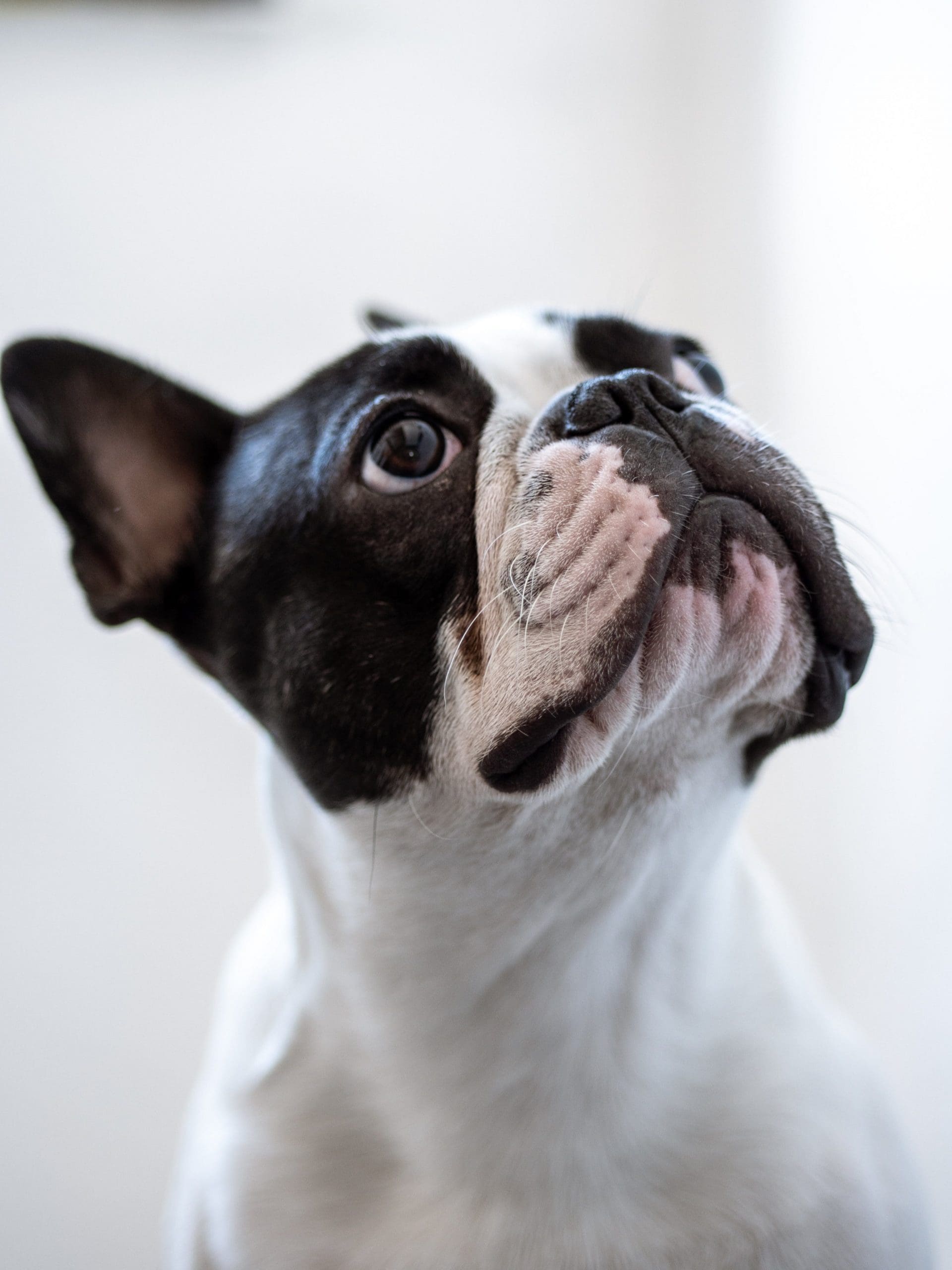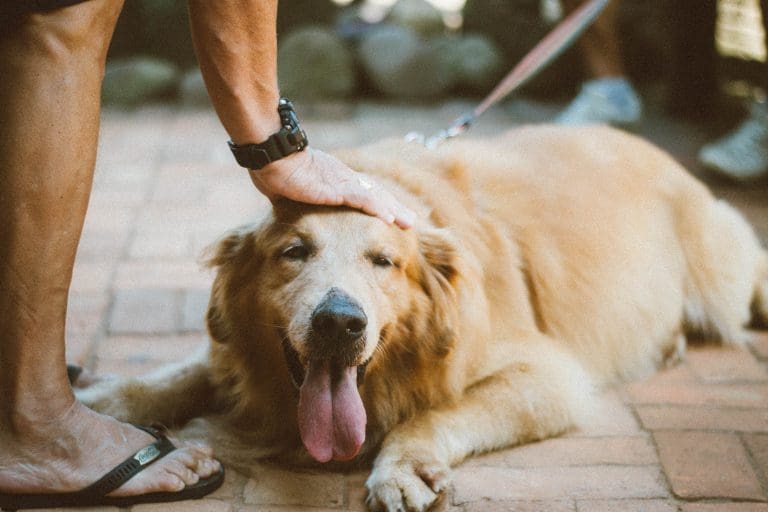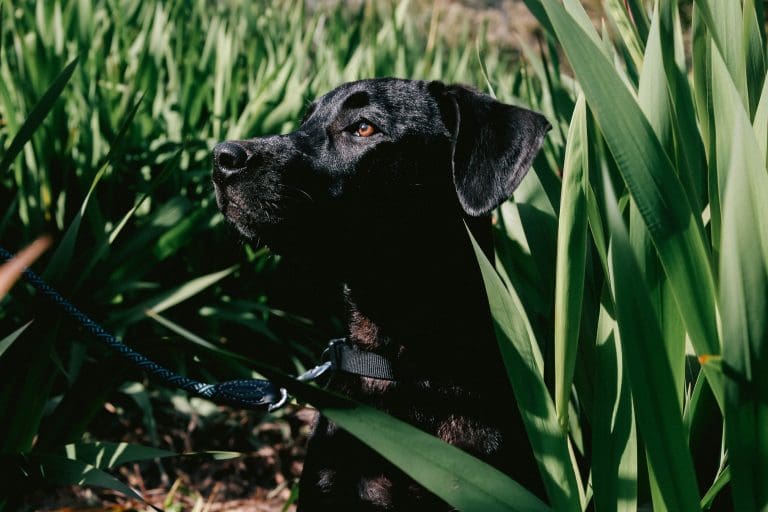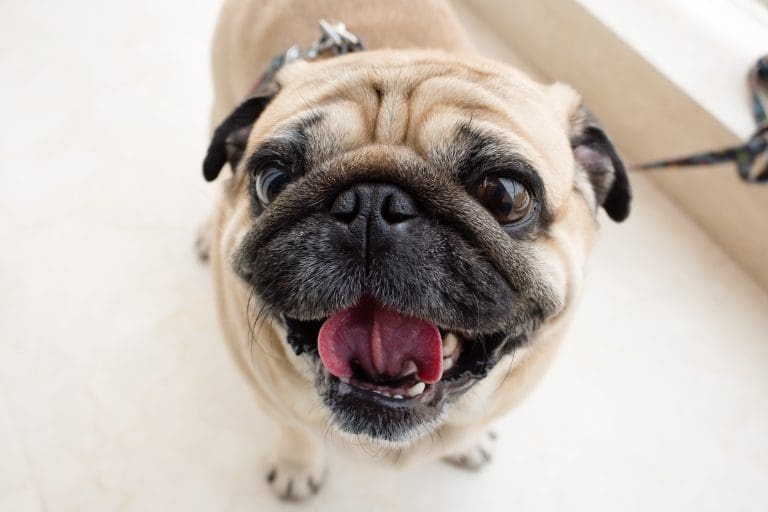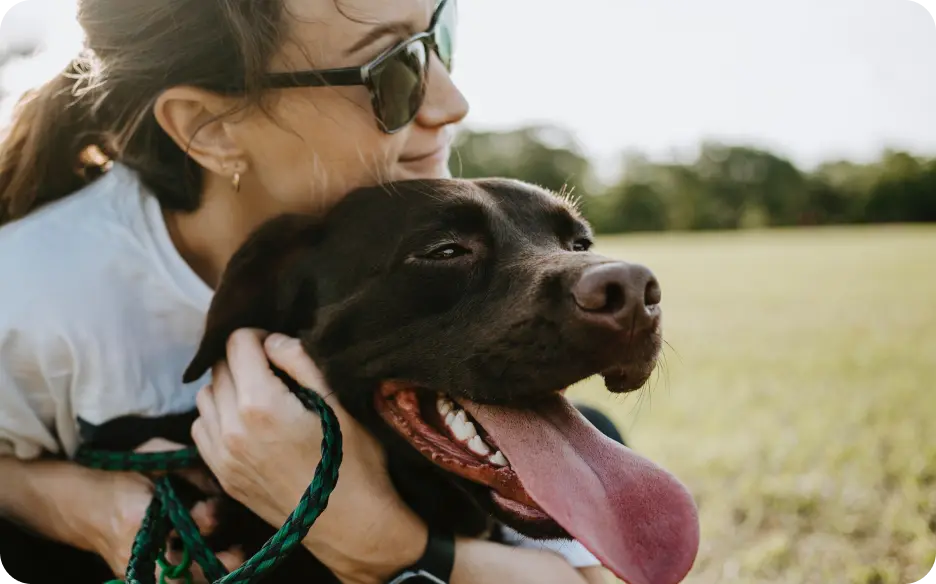How Much Garlic Is Toxic To Dogs?
Post Date:
December 10, 2024
(Date Last Modified: November 13, 2025)
Garlic is a common food ingredient that contains chemicals capable of harming a dog’s red blood cells under certain conditions. Understanding the compounds involved, typical exposure scenarios, and appropriate responses helps owners and veterinarians manage risk.
Garlic and toxic compounds
The primary oxidizing agents implicated in canine Allium toxicity are thiosulfates and N-propyl disulfide, which form during garlic processing and digestion and drive oxidative stress in erythrocytes.[1]
Different Allium species vary in their concentration of these compounds, with garlic typically containing higher relative amounts per gram than common onions on a weight basis according to veterinary toxicology summaries.[1]
Because the active compounds can concentrate or change with preparation (raw, cooked, or powdered), the risk profile for “garlic” exposures is not identical to other Allium plants like onions or leeks.[1]
How garlic causes harm in dogs
Garlic-derived oxidants cause oxidative damage to hemoglobin and the red blood cell membrane, producing Heinz bodies and promoting premature red cell destruction (hemolytic anemia).[1]
Heinz bodies are intracellular aggregates of denatured hemoglobin visible on a blood smear and are a hallmark of oxidant-induced hemolysis in dogs.[1]
The toxic process is both dose- and time-dependent: single large ingestions can cause acute oxidative injury, while repeated low-level exposures can produce cumulative damage over days to weeks.[1]
Toxic dose thresholds and uncertainty
Published practical guidance often cites toxic garlic thresholds around 5 grams of garlic per kilogram of body weight for inducing hemolysis in some reports.[2]
Other veterinary reviews and case series report higher thresholds, in some cases up to about 15 grams per kilogram, reflecting study differences and uncertainty in extrapolating between animals and preparations.[3]
To illustrate, a 10-pound dog (~4.5 kg) would reach a 5 g/kg exposure at roughly 22.5 grams of garlic (about 0.8 ounces), while at 15 g/kg that same dog would ingest about 67.5 grams (about 2.4 ounces).[3]
| Source type | Reported threshold | Example for 10-lb dog |
|---|---|---|
| Practical toxicology guidance | ~5 g/kg | ~22.5 g (0.8 oz) |
| Higher-range reviews | ~15 g/kg | ~67.5 g (2.4 oz) |
| Case-based variability | Reported cases vary widely | Depends on form and frequency |
Estimated thresholds differ because studies and reports mix raw, cooked, powdered, and oil-based garlic products, and because individual dog susceptibility varies; these uncertainties are summarized in peer-reviewed literature and toxicology reviews.[3]
Clinical signs and timeline of poisoning
Early gastrointestinal signs such as vomiting, diarrhea, hypersalivation, and abdominal discomfort are often seen within 1 to 24 hours after ingestion.[4]
Signs of oxidative hemolytic anemia—lethargy, pale or icteric (yellow) mucous membranes, rapid breathing, and dark urine—typically develop later, commonly between 3 and 7 days after exposure as red cells are progressively destroyed.[4]
Severity ranges from mild, transient hematologic changes detectable only on laboratory testing to severe, symptomatic anemia requiring hospitalization and transfusion in extreme cases.[4]
Forms and common sources of exposure
- Fresh or raw garlic cloves in food or mixed dishes.
- Cooked garlic used in sauces, dressings, or as flavoring.
- Garlic powder and concentrated seasonings, which can be more potent by weight.
- Garlic-flavored commercial treats, supplements, or oils marketed for pets or humans.
Human foods such as salad dressings, garlic salt blends, garlic butter, and prepared sauces are common real-world sources of accidental exposure when dogs access trash, table scraps, or unattended food; reputable poison-control resources note that powdered and concentrated forms may deliver more active compound per teaspoon than fresh cloves.[5]
Dogs most at risk
Small-breed and low-body-weight dogs are at increased risk because a given amount of garlic delivers a larger dose per kilogram of body weight, increasing the chance of reaching a toxic threshold.[5]
Dogs that are young, elderly, or already anemic have lower physiologic reserve and may show clinical effects at lower exposure levels than healthy adult dogs.[5]
Cumulative or repeated exposures—such as daily supplements or regular feeding of garlic-containing treats—can produce toxicity over time even if single servings seem small, a pattern described in veterinary toxicology reports.[5]
Home first aid and immediate steps
Collect precise information about what was ingested, how much, the garlic form (fresh, powdered, oil), and the dog’s weight in pounds; this information helps veterinary staff estimate the dose per kilogram.[6]
Do not induce vomiting unless a veterinarian or poison-control specialist directs you to do so; if instructed, emesis is generally recommended only within a limited time window after ingestion and under professional guidance.[6]
Avoid home “antidotes” or unproven remedies—do not give activated charcoal, hydrogen peroxide, or other treatments without explicit veterinary instruction because timing, dosing, and contraindications depend on the case.[6]
Veterinary diagnosis and testing
A thorough history and physical exam are the first steps, with attention to mucous membrane color, heart and respiratory rate, and evidence of jaundice or dark urine.[4]
Complete blood count (CBC) will assess anemia and red cell indices; a blood smear is used to detect Heinz bodies and evidence of hemolysis.[4]
Serum biochemistry can identify elevated bilirubin consistent with hemolysis, and urinalysis may show hemoglobinuria; these laboratory findings, combined with exposure history, guide diagnosis and prognosis.[4]
Treatment options and in-clinic care
Immediate veterinary management may include decontamination such as activated charcoal when appropriate and within a suitable time frame, as determined by the clinician.[6]
Supportive care often consists of intravenous crystalloid fluids and monitoring; a typical maintenance fluid estimate used in veterinary practice is approximately 50 mL/kg/day as a starting maintenance guideline, adjusted to the patient’s needs.[6]
Oxygen therapy and blood transfusion are reserved for dogs with significant respiratory compromise or markedly low packed cell volume (PCV); many veterinary sources note transfusion consideration when PCV falls below about 15% to 20%, depending on clinical signs.[6]
Because anemia from garlic exposure can be delayed, veterinarians commonly recommend rechecking the CBC at intervals such as 48 to 72 hours and again around one week after exposure to detect progressive hemolysis.[6]
Prevention and safe feeding guidance
Strict avoidance of garlic-containing human foods, supplements, and treats is the safest approach; even small amounts can be risky for small dogs or with repeated exposure, according to poison-control guidance.[2]
Safer seasoning alternatives for pet-safe foods include plain herbs that are non-toxic to dogs (for example, parsley or basil) and avoiding garlic powder or salt blends; store food and trash securely so curious dogs cannot access discarded food containing garlic.[2]
Educate household members and guests about the risks and the importance of not sharing table scraps that contain garlic or garlic-based sauces with pets.[2]
Continued clinical detail and monitoring
After initial stabilization, veterinarians commonly schedule serial complete blood counts to watch for dropping red blood cell mass, with an early recheck often performed at approximately 48 hours and another at about 7 days post‑exposure to capture delayed hemolysis.[4]
Pulse oximetry and respiratory rate are monitored frequently in hospitalized patients; if a dog’s respiratory rate exceeds 40 breaths per minute at rest or oxygen saturation falls below 92%, supplemental oxygen and more intensive supportive care are typically considered.[6]
When clinicians calculate fluid needs for intravenous maintenance and resuscitation, a common starting maintenance estimate is about 50 mL per kilogram per day, adjusted according to hydration status and any ongoing losses or cardiac/renal comorbidities.[6]
Activated charcoal and decontamination specifics
Activated charcoal may be used when ingestion is recent and the formulation of garlic suggests enterohepatic cycling or delayed absorption; the decision depends on time since ingestion and the dog’s neurologic and airway status, and dosing/administration are veterinarian-directed.[6]
Because powdered or concentrated garlic can deliver larger amounts of active compound per teaspoon than fresh cloves by weight, clinicians take formulation into account when estimating the absorbed dose and potential benefit of decontamination.[3]
Blood transfusion criteria and supportive thresholds
Transfusion decisions are based on both measured packed cell volume (PCV) and clinical signs; many veterinarians consider transfusion when PCV falls below roughly 15% to 20% or earlier if the patient is tachypneic, tachycardic, or showing collapse, congestive signs, or severe weakness.[6]
When transfusion is performed, crossmatching and blood typing practices follow regional blood-bank guidelines; post-transfusion monitoring includes rechecking PCV within 12 to 24 hours to assess response and detect hemolytic transfusion reactions.[6]
Longer-term follow-up and complications
Even after apparent clinical recovery, some dogs show persistent or late-onset lab abnormalities; clinicians often recommend re-evaluation at around 2 weeks post-exposure for animals that had hematologic changes, with further checks tailored to the individual course.[4]
Complications such as secondary infections or pigmenturia-related kidney irritation are uncommon but possible; if urine appears dark or concentrated, urinalysis and serum biochemistry are repeated to evaluate renal function and hemoglobinuria/hematuria.[4]
Risk communication and household management
Owners are advised that a single exposure that seems small by volume can still exceed a dog’s safe mg/kg dose if the dog is tiny or the product is concentrated; for example, 1 teaspoon of garlic powder can weigh several grams and therefore represents a nontrivial dose in a 5-pound dog.[3]
Practical steps include locking supplements and seasonings away, immediately discarding food scraps in secured bins, and telling household members and visitors not to feed table scraps; these measures reduce the chance of both single large ingestions and repeated low-dose exposure.[2]
Interpreting research and verifying guidance
Peer-reviewed toxicology studies and veterinary textbooks provide the primary data on dose‑response and mechanisms, but study designs vary and controlled experimental data are limited relative to case reports, so threshold estimates should be treated as approximate rather than absolute.[3]
Veterinary association guidance and large veterinary hospital resources summarize clinical best practices for monitoring and treatment; when in doubt about an exposure, contacting a veterinary poison-control service or the treating veterinarian provides case-specific assessment that incorporates the animal’s weight, the garlic form, and time since ingestion.[2]
Safer alternatives and nutritional considerations
For owners using garlic supplements for perceived health benefits, veterinarians typically recommend discontinuing such products for dogs and instead focusing on balanced commercial diets or veterinarian-approved supplements; the risk-to-benefit ratio for garlic in dogs is generally unfavorable given the potential for hemolysis and the availability of safer alternatives.[5]
When seasoning homemade dog food, small amounts of safe herbs such as parsley or basil can add flavor without the oxidative risk associated with Allium species; salt, onion, and garlic-containing seasonings should be avoided entirely for canine diets.[2]
When to call a veterinarian or poison-control service
Contact a veterinarian promptly if a dog has ingested a known amount of garlic that approaches or exceeds commonly cited dose ranges (for example, several grams per kilogram) or if any early symptoms such as vomiting, lethargy, or dark urine appear.[3]
Immediate veterinary contact is particularly urgent for small dogs, dogs with preexisting anemia or cardiopulmonary disease, or animals that have ingested concentrated garlic products or garlic oil supplements, because these conditions increase the chance of significant clinical effects.[5]

